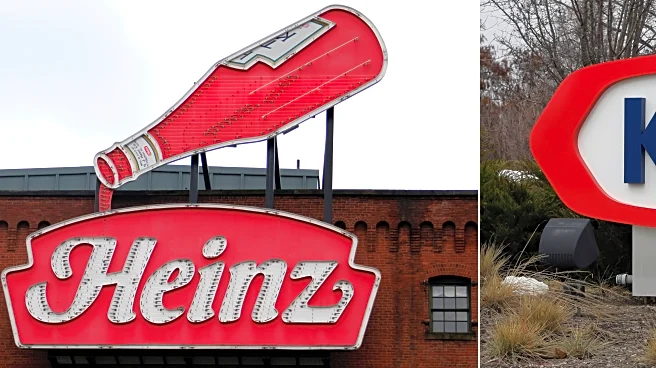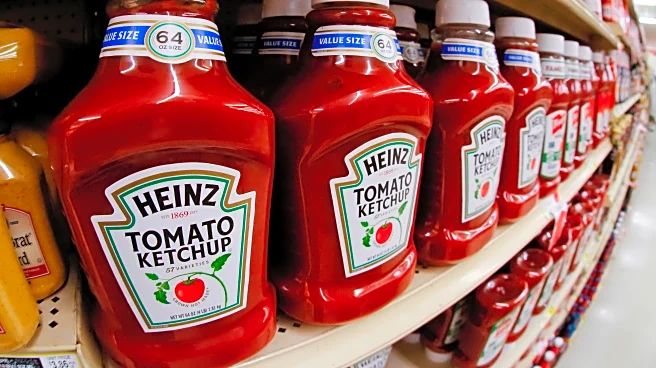What's Happening?
Kraft Heinz has announced its decision to split into two separate publicly traded companies. This strategic move aims to streamline operations and focus on distinct market segments. One company will concentrate on faster-growing businesses such as sauces, spreads, and shelf-stable meals, including brands like Heinz, Philadelphia, and Kraft Mac & Cheese. The other will focus on grocery items and food away from home, featuring brands like Oscar Mayer, Kraft Singles, and Lunchables. The split is expected to take place in the second half of 2026, reversing the 2015 merger orchestrated by Berkshire Hathaway and 3G Capital. This merger had initially aimed to create a large-scale food company but faced challenges in maintaining value and adapting to changing consumer preferences.
Why It's Important?
The decision to split Kraft Heinz into two entities reflects broader trends in the food industry, where companies are increasingly focusing on specialization to drive growth. By separating its operations, Kraft Heinz aims to allocate resources more effectively and respond to consumer demands for healthier and more diverse food options. This move could potentially unlock shareholder value and improve performance by allowing each company to focus on its core strengths. However, it also raises questions about the costs and challenges associated with the split, as well as the future growth strategies for each entity. Investors and industry analysts will be closely watching how the split impacts Kraft Heinz's market position and financial performance.
What's Next?
As Kraft Heinz prepares for the split, the company will need to navigate the complexities of dividing its operations and ensuring a smooth transition for both entities. This includes appointing leadership for the new companies and developing distinct growth strategies. The market will be keen to see how each company plans to innovate and capture market share in their respective segments. Additionally, the split may prompt reactions from competitors and could influence broader industry trends towards specialization and strategic realignment.













